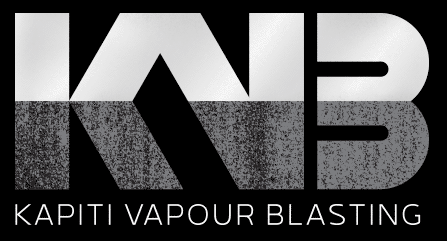Vapour blasting used in conjunction with ultrasonic cleaning helps maintain the highest standards of engineering when dealing with high performance and collectable vehicles.
Show ‘n' Shine with Nick
Kapiti Vapour Blasting owner and operator, Nick Sparrow, is a man of many parts.
His background in design and technology for film and television and his love of all things car related give him the edge when it comes to providing a fast, reliable service using state of the art cleaning processes.
After travelling the world on the smell of an oily rag he spent almost a year researching new technology vapour blasting and ultrasonic cleaning, inside and out. Inside engine parts in the case of ultrasonic cleaning in conjunction with vapour blasting for the outside surfaces.
What gets Nick’s motor running?
“I like to clean, I like cars. Most of the cars I have owned have been VW’s of one kind or another but really I just really like cars. And I like being an instrumental part of a successful restoration project. You’re welcome to sound me out about your bike, too.”
Vapour Blasting
Suitable for aluminium, bronze, magnesium, titanium, brass and copper, the vapour blasting process will gently clean exterior surfaces without damage and leave a nice satin finish, which is very easy to keep clean.
The vapour blasting process uses water, micro beads, mild cleaning agents and air, mixed into a slurry and propelled at high speed toward the surface of a metal part sealing the surface and resulting in cosmetic enhancement and imparting a micro finish that helps resist further staining and oxidation.
The water component of the slurry provides hydraulic cushioning to soften the micro bead's impact on the metal's surface. Together, they provide a gentle, and somewhat time consuming process that peens the metal surface and leaves a bright lustrous satin finish.
* Please be aware that any item that rusts cannot be done with this process as the item oxodises instantly.
Ultrasonic Cleaning
Speeding up and simplifying engine part cleaning, environmentally friendly ultrasonic cleaning provides effective results without the use of harsh solvents and gets into the deepest and smallest internal spaces.
To break down baked on carbon and fuel residues the process utilises high frequency sound waves, which are radiated through a liquid medium.
The sound waves are created by a number of transducers, which are bonded to the base of the ultrasonic bath. An electrical current is passed through two transducer crystal rings that become agitated and vibrate at around 40,000 times a second.
This vibration converts the electrical energy to sound energy, which is then transferred through the base of the tank into the liquid. As the sound waves pass through the fluid microscopic bubbles form.
The bubbles grow in size and implode, a phenomenon known as cavitation. As the bubbles collapse the surrounding cleaning fluid rushes in to fill the gaps, which creates an action similar to that of a scrubbing brush, but thousands of times a second per cubic centimetre.
Ultrasonic cleaning is the most effective method for removing contaminants from hard substrates or complex shapes which results in better fuel efficiency and smoother torque and power curves.




